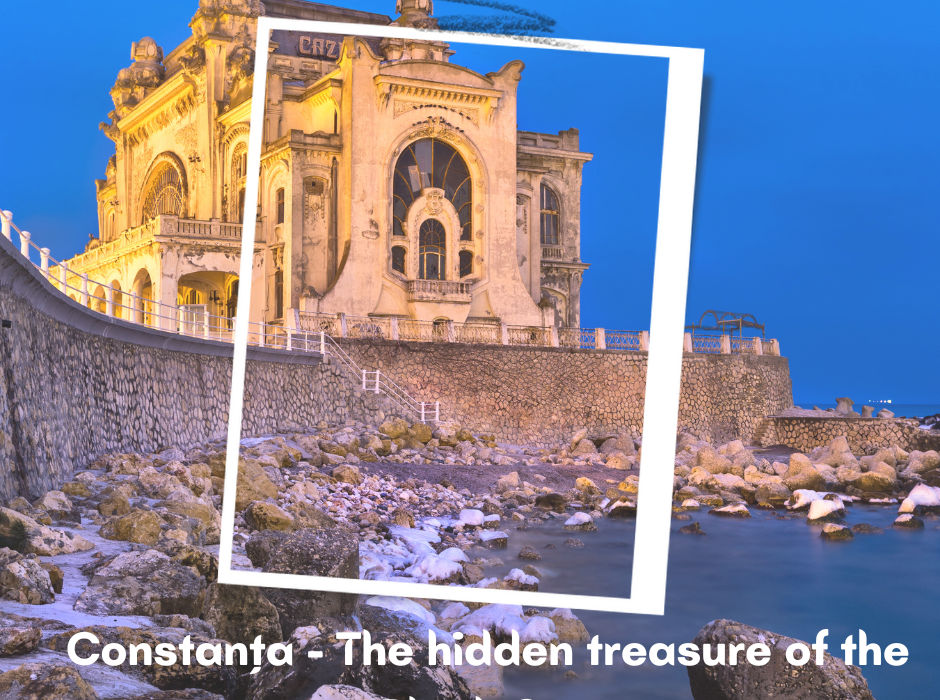Constanța, Romania’s oldest city and largest seaport, is a destination where ancient history, cultural diversity and seaside atmosphere meet. Located on the Black Sea coast, the city offers not only beautiful beaches and vibrant nightlife, but also fascinating historical monuments, exciting gastronomic experiences and scenic excursions in the area.
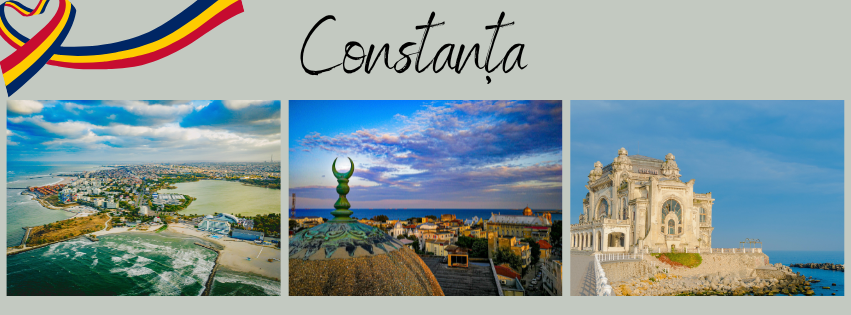
History
The city was founded in the 6th century BC by Greek settlers under the name of Tomis. It later fell under Roman rule and became the site of the exile of the famous Roman poet Ovid. Over the centuries, Constanța has been an important crossroads in Byzantine, Ottoman and Roman history, the influence of which can still be felt in its architecture and cultural heritage.
Did you know? Constanta is one of the oldest continuously inhabited cities in Romania and Europe.
Interesting fact! The port of Constanta is one of the largest ports on the Black Sea and in Europe, playing a crucial role in Romania’s economy and international trade.
Places to visit
Constanța Casino – An iconic jewel of the city, the Constanța Casino is a stunning example of Art Nouveau architecture. The wooden building, originally built in 1880, has been rebuilt several times and was restored to its current form in 1910. It was once known as the ‘Monte Carlo of Romania’, but despite its historical value, it has long stood abandoned. In 2020, renovation work began to restore it to its original splendour. Specialists are working on the structural reinforcement of the building, while restorers are carefully restoring the decorative elements. The casino’s impressive interior and historical importance make it an unmissable attraction. After extensive renovation, the casino reopened in June 2024, offering visitors the chance to discover this unique monument.
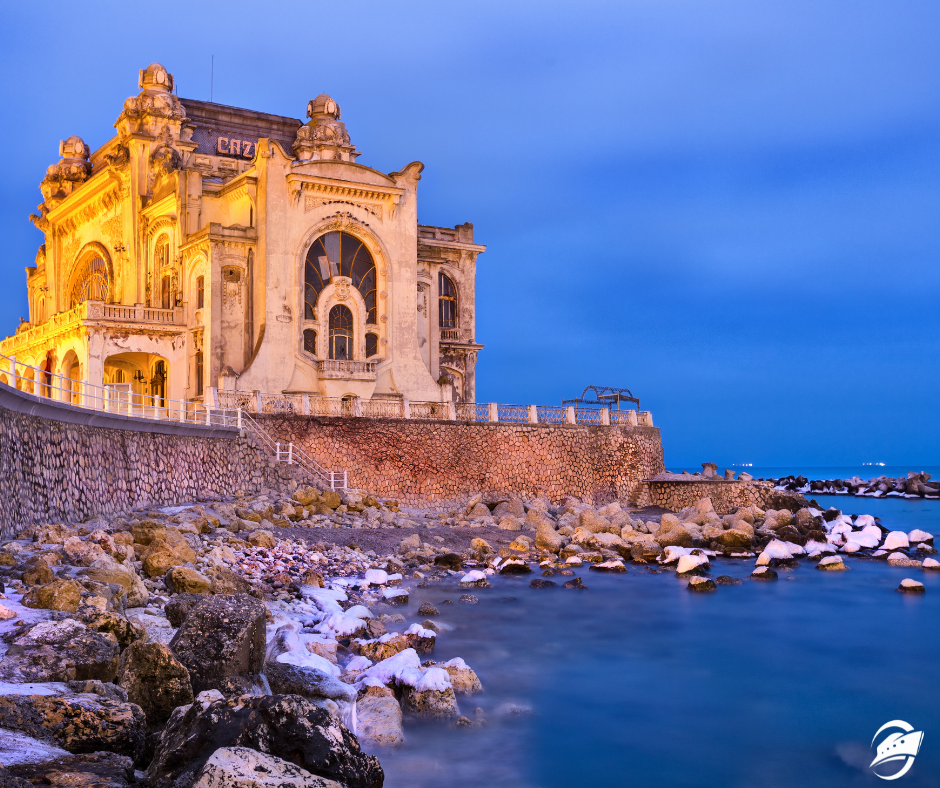
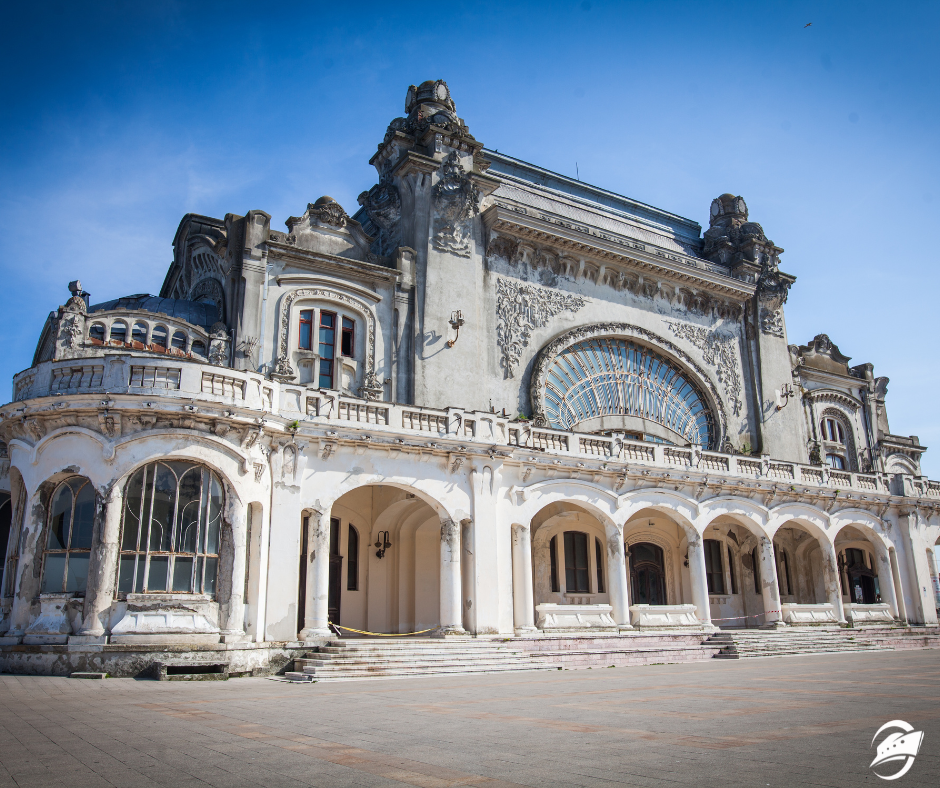
Ovid’s Square and statue – Constanța’s Old Town is a true journey through time, where history and architecture meet in perfect harmony. Ovid Square, named after the exiled Roman poet, is the heart of the city with its colourful buildings, cafés and restaurants. The proximity of the Genoa lighthouse and the port gives a glimpse into the city’s rich past. Strolling along the cobbled streets, visitors are dazzled by old churches, mosques and historic buildings, including the impressive interior of the Orthodox Cathedral of Saints Peter and Paul. The National History and Archaeology Museum and the Naval Museum offer a deeper insight into the city’s past and maritime heritage. Constanța’s Old Town is a unique blend of history, architecture and culture that will enchant any visitor.
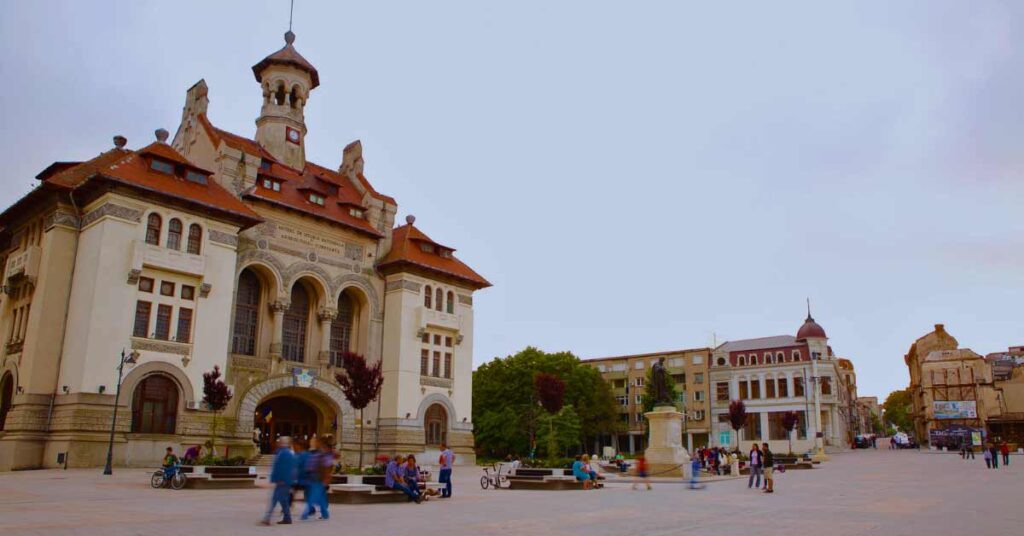
Great Mahmudiye Mosque – The Great Mosque of Constanta, also known as the King’s Mosque, is one of the most important Islamic monuments in Romania, offering stunning views of the city and the Black Sea. Located in the main square of the city, near the National Museum of History and Archaeology, its distinctive tower is recognisable from afar. Its architectural style is a mix of neo-Egyptian, neo-Byzantine and neo-Romanesque elements, designed by George Constantinescu. Climbing the 50-metre-high minaret offers visitors an unparalleled panorama, including the Old Town of Constanta, the harbour and the Tomis Turistic Marina. The interior of the mosque boasts an ornate courtyard, marble columns, artworks and a huge Turkish carpet. The prayer room is a sacred space where only worshippers are allowed to enter, but visitors can climb the spiral staircase of the minaret to enjoy the breathtaking view.

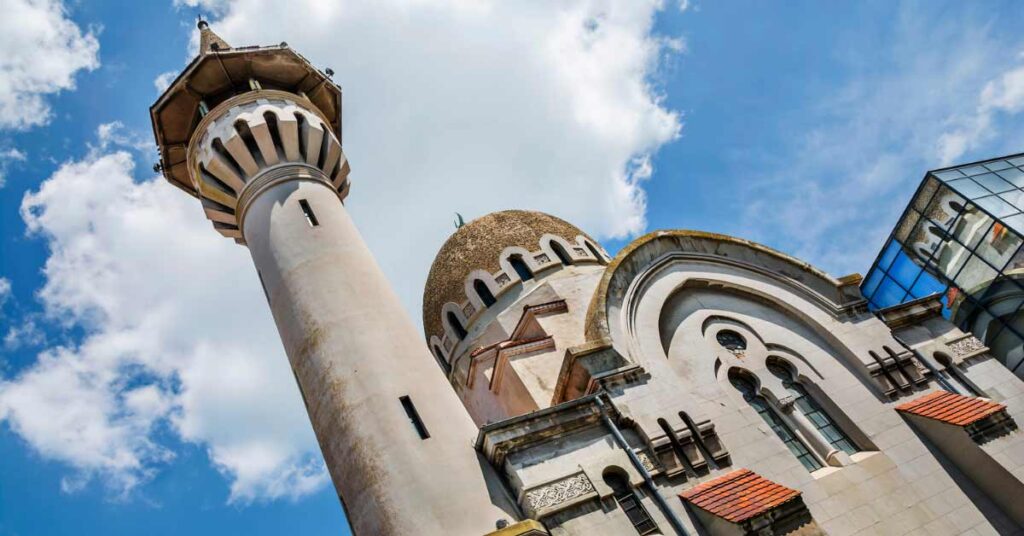
St Peter and St Paul’s Cathedral: one of the most important spiritual and historical monuments in Constanta, it is a landmark of impressive Byzantine style and religious artefacts. Its interior paintings have a unique history, as the original frescoes, painted in a realist style by Demetrescu Mirea, caused great controversy and the Orthodox Church initially refused to consecrate the church. Eventually, in 1895, the consecration was approved and the frescoes were left in place, but during the Second World War the cathedral was badly damaged and the paintings were destroyed. During the subsequent restoration, Gheorghe Popescu and Dona Niculina Delavrancea created new Byzantine-style frescoes, which can still be admired today. The most outstanding of these are the depictions of Heaven and Hell and the two ‘thrones’ at the entrance to the cathedral, which give the building artistic importance. The cathedral is not only an architectural marvel, but also an important spiritual centre for locals and travellers. When visiting, it is worth taking time for quiet contemplation and to experience the tranquil atmosphere of the church
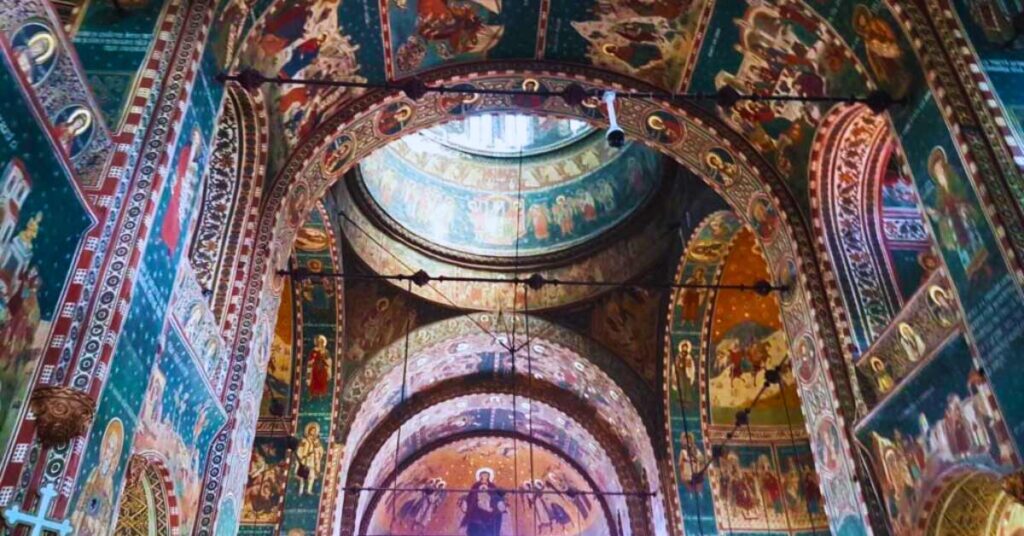
Roman Mosaic Museum – Remains of an ancient Roman marketplace, where you can see fascinating mosaics and trade artefacts.
A visit to Constanta is not complete without a taste of the local cuisine. From hearty soups such as ciorbă de pește (fish soup) to mouth-watering grilled mackerel, the city’s culinary world is sure to tantalize your taste buds.

For a unique experience, try the mămăligă (polenta), traditionally served with sarmale (cabbage rolls) and a dollop of smântână (sour cream).

Local specialities include saramură de pește, a spicy fish soup made with grilled fish and vegetables, and midii la ceaun, a delicious Black Sea mussel in a garlic and white wine sauce. For a sweet tooth, don’t miss the papanasi, a doughnut made with cottage cheese and served with sour cream and cranberry jam. And for lovers of authentic Romanian drinks, the famous Țuică, a plum brandy of protected origin, and vișinată, an aromatic cherry liqueur, are not to be missed. If you are curious about the history, production and cultural significance of these traditional drinks, read our blog

Attractions in the area
Mamaia – one of the most popular seaside resorts in Romania, only about 5 km north of Constanta. In the summer months, it attracts visitors with its lively nightlife, chic beach clubs and sandy beaches. Situated between the Black Sea and Lake Siutghiol, Mamaia is ideal for water sports, boating or even a pleasant stroll along the promenade. Mamaia is famous not only for its stunning coastline and lively nightlife, but also for its delicious street food, including horn cakes. This cylindrical cake, of Transylvanian origin, is a real treat for beach-goers when freshly baked, with a golden brown caramelized sugar coating and a crispy exterior. Horn cakes are traditionally served with a sprinkling of cinnamon, vanilla, cocoa, nuts or even coconut
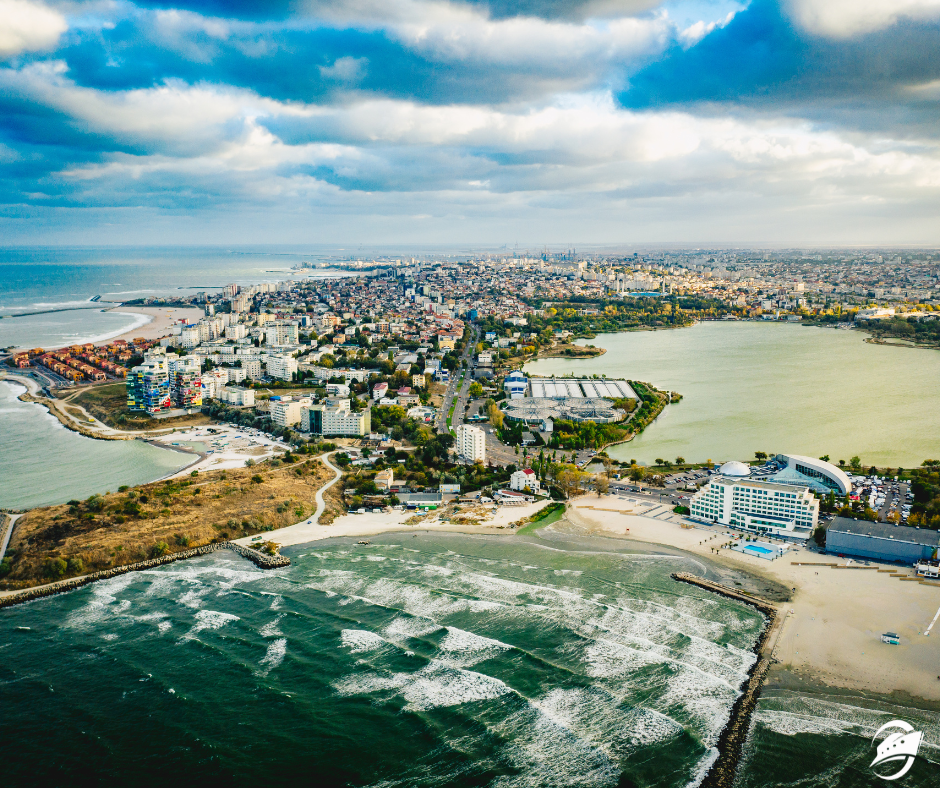
Histria – This ancient Greco-Roman city is one of the most important archaeological sites in Romania, about 50 km north of Constanta. Histria was founded in 657 BC and was the earliest city in the region to flourish under the rule of the Greeks, Romans and Byzantines. Among the ruins are the remains of ancient temples, baths and dwellings, offering a glimpse of ancient life. The nearby Histria Museum offers further artefacts and information on the rich history of the settlement
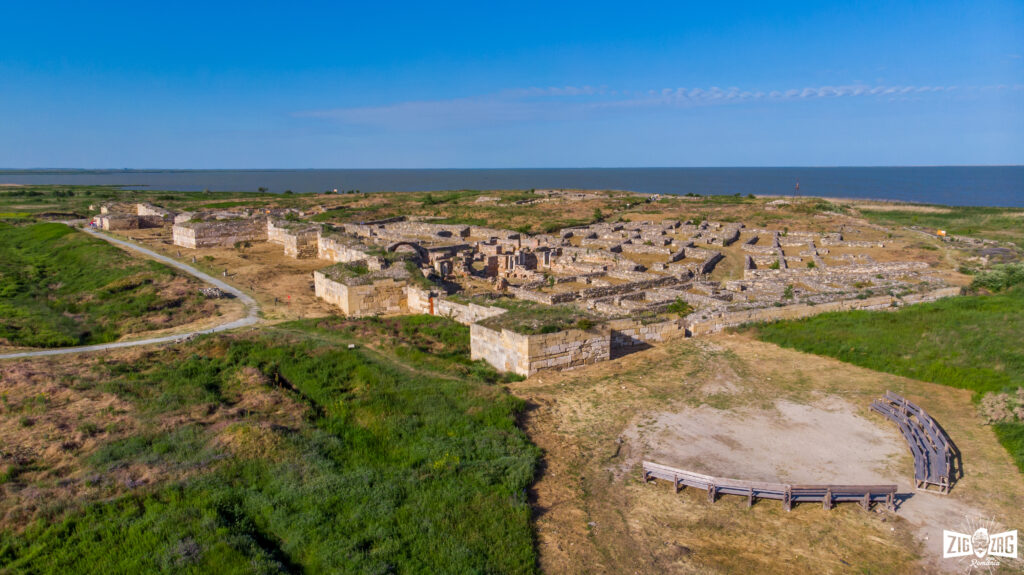
Vama Veche – A seaside town with a bohemian atmosphere, located about 50 km south of Constanta, close to the Bulgarian border. Famous for its alternative lifestyle and free-spirited festivals, it attracts artists, musicians and young people, especially during the summer season. The sandy beach is lined with simple campsites, bars and live music venues where visitors can escape from everyday life. Although it has grown in popularity over the years, it still retains its authentic, laid-back vibe.
Eforie Nord – A seaside resort known for its therapeutic mud baths, about 15 km south of Constanta. Its main attraction is Lake Techirghiol, whose mud has long been used for therapeutic purposes, especially for musculoskeletal and skin diseases. The sandy beaches of Eforie Nord are perfect for relaxation, while the thermal baths and wellness centres offer visitors extra comfort. The quieter, family-friendly environment makes it an ideal destination for those who prefer peace and quiet to the busier resorts.
From Constanta you can visit nearby Varna, Bulgaria’s third largest city and an important seaside resort. It is only a 2.5-3 hour drive away, making it easily accessible for a day trip. Varna has a rich history and offers many attractions that will appeal to visitors interested in history and culture. The town is famous for the Varna Archaeological Museum, which displays ancient artefacts from the region, including the famous Varna Gold Treasure, one of the largest and most important gold finds in the world. The Church of St Mark and the Cathedral of Varna are important pieces of the city’s religious heritage, attracting visitors with their architectural beauty and historical significance. In addition to enjoying the magnificent scenery of the Black Sea coastline, the city’s surroundings are home to many historical and cultural monuments, such as the Aladzha Monastery, a cave church and one of the religious heritage sites of the region. As well as cultural events and exhibitions, Varna also offers many pleasant walks and relaxation opportunities, making it an ideal place for those who want to spend some time on the beach while learning about the city’s rich history.
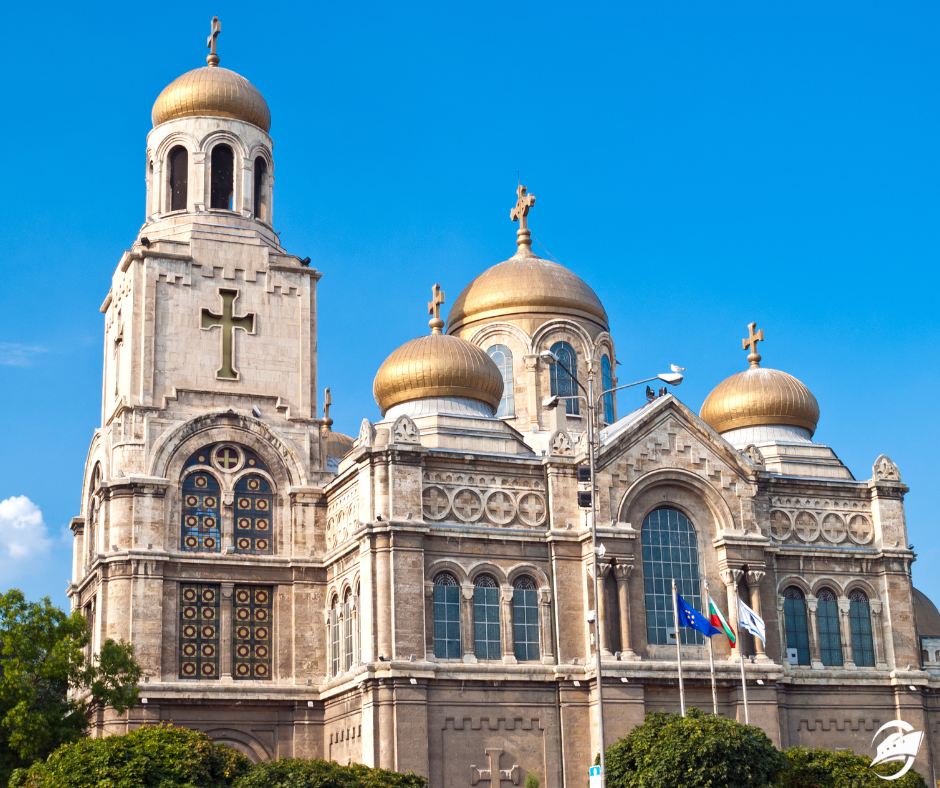
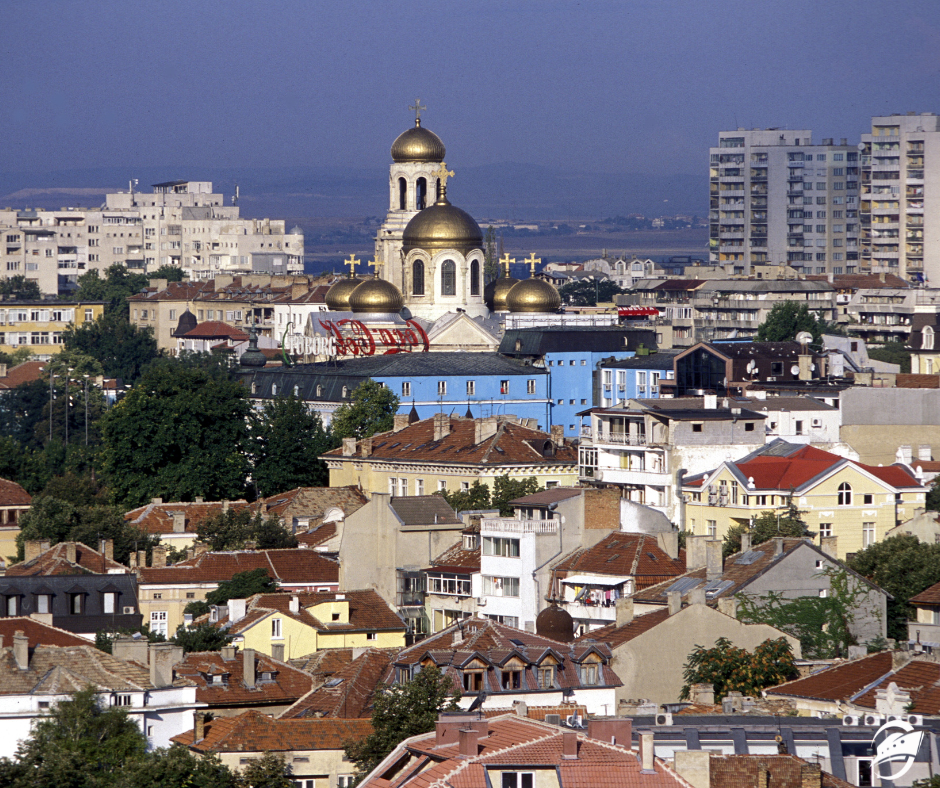
Constanța is a city that is the perfect blend of history, culture and seaside relaxation. Whether it’s a romantic stroll past the casino, a delicious fish meal in the harbour or a trip to the nearby ruins, this city always has something special in store for travellers. If you are looking for an exciting and authentic seaside experience, Constanța is the perfect destination!


